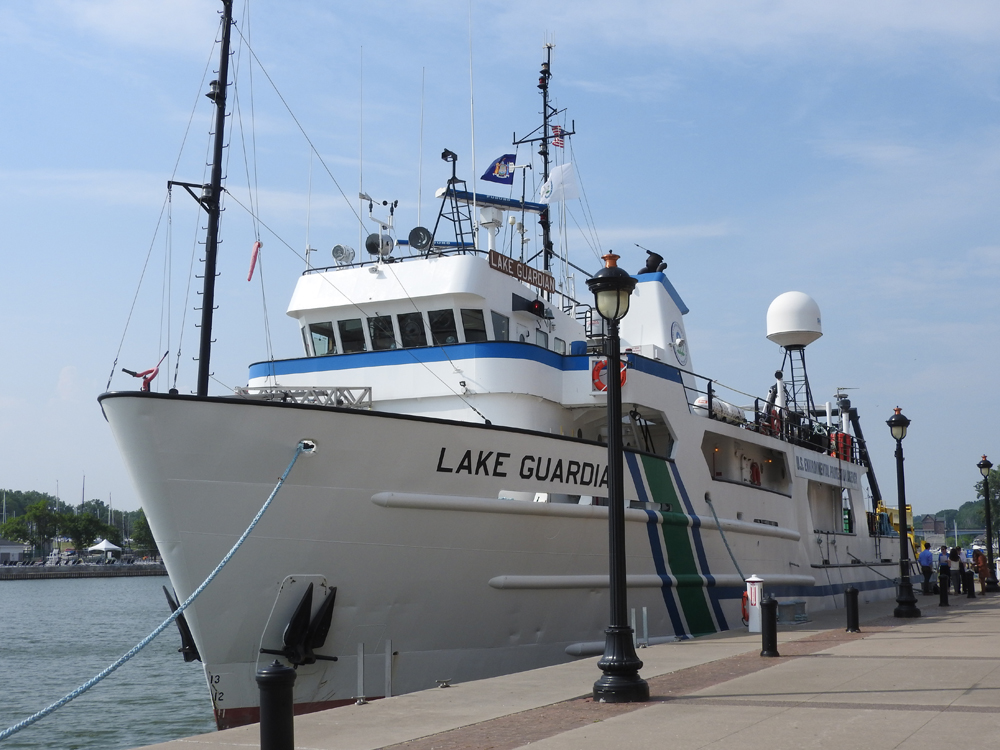EPA’s floating laboratory Lake Guardian sails again

After a year in lockdown due to COVID-19, the Environmental Protection Agency’s largest research vessel Lake Guardian has set sail, docking in Rochester on April 12. Eleven scientists supported by a 15-member crew will live and work aboard the ship this month. Among other activities, these scientific sailors are lowering nets, sleds, bottles, cameras, and other types of equipment into the Great Lakes to collect water, sediment, and lower food web organisms. Scientists will use the three on-board laboratories to examine and evaluate the collected samples, which will shed light on many of the pressing and urgent issues affecting the Great Lakes.
EPA’s Great Lakes National Program Office has conducted water quality surveys every spring and summer since 1983, with the exception of the 2020 surveys, which were canceled due to COVID-19. These surveys help EPA fulfill environmental monitoring and assessment commitments specified in the Great Lakes Water Quality Agreement between Canada and the United States and in the U.S. Clean Water Act. The Lake Guardian is funded by the Great Lakes Restoration Initiative, launched in 2010 to accelerate efforts to protect and restore the world’s largest system of fresh surface water.
In recent years, EPA monitoring programs reported the first detections of three additional non-native zooplankton species in the Great Lakes. These species are still considered rare and, thus far, are not demonstrating a threat to the Great Lakes. On this survey, scientists are monitoring the long-term changes in phytoplankton at offshore stations where the conditions are shallower and closer to nearshore regions of Lakes Michigan and Superior. Nearshore data is closer to the stress associated with human activities on land and may tell a story that directly reflects human-Great Lakes interactions.
During the past two centuries, over 180 species of aquatic plants and animals not native to the area have been introduced into the Great Lakes resulting in significant changes to the ecosystem. These changes have greatly affected the economy, health, and well-being of the people that rely on the system for food, water, and recreation. Zebra and quagga mussels were first discovered over 30 years ago and have coincided with major changes to the Great Lakes water quality and food health, especially in Lakes Huron, Ontario, and Michigan. The mussels eat up the offshore algae, which leaves less food for the lower food web. EPA Lake Guardian scientists use these surveys to study these effects.
When the scientists on the Lake Guardian are not searching for new species or evaluating the lower food web, they are often promoting STEM education on video calls with students in a program called “Students Ask Scientists,” where classrooms get an inside look into the daily life of the scientists on-board.
Those interested in learning how they can protect against the spread of invasive species in the Great Lakes, can see information from the Illinois-Indiana Sea Grant at https://iiseagrant.org/publication-topic/aquatic-invasive-species/.
Provided information






